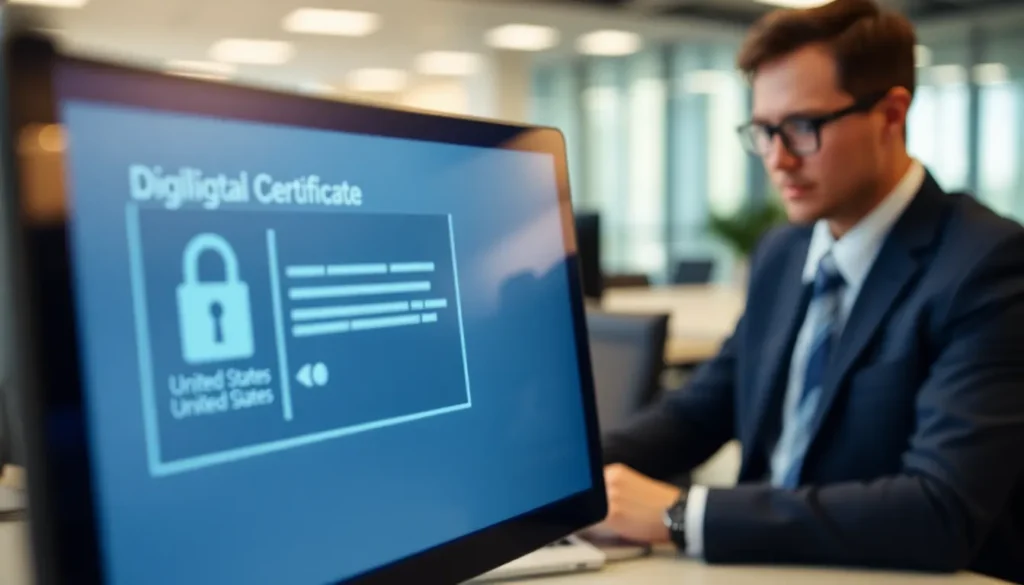Table of Contents
ToggleIn today’s digital landscape, organizations face a growing risk from insider threats. Unlike external attacks, these threats often come from employees or trusted partners who exploit their access to sensitive information. The consequences can be devastating, leading to data breaches, financial losses, and reputational damage.
To combat this challenge, businesses must implement robust insider threat defense strategies. This involves not just technology, but also fostering a culture of security awareness among employees. By understanding the motivations behind insider threats and adopting proactive measures, companies can better protect their assets and maintain trust in their operations.
Understanding Insider Threats
Insider threats occur when individuals within an organization misuse their access to sensitive information, leading to potential risks. Recognizing these threats is essential for implementing effective defense strategies.
Definition of Insider Threats
Insider threats refer to risks originating from employees, contractors, or business partners who exploit their legitimate access to organizational data. These threats can manifest in various forms, including unauthorized data disclosure, sabotage, and theft. According to the Ponemon Institute, 60% of organizations experience insider threats, highlighting the critical need for robust monitoring and preventive measures.
Types of Insider Threats
- Malicious Insiders: Malicious insiders intentionally seek to harm the organization. They may engage in data theft, sabotage, or espionage for personal gain or revenge.
- Negligent Insiders: Negligent insiders cause security breaches through careless actions. Examples include mishandling sensitive information, failing to follow security protocols, or falling victim to phishing attacks.
- Compromised Insiders: Compromised insiders undergo coercion or manipulation. For instance, attackers may exploit their credentials after obtaining personal information through social engineering techniques.
- Third-party Vendors: Third-party vendors represent another source of insider threats. They may gain access to internal systems and data, leading to potential vulnerabilities if proper security measures aren’t in place.
Importance of Insider Threat Defense

Insider threat defense is crucial for maintaining organizational security and protecting sensitive information. Organizations face significant risks from employees and trusted partners who misuse their access.
Risks Associated with Insider Threats
Risks from insider threats can manifest in various forms. Data breaches can lead to significant financial losses, with estimates averaging $4.24 million per breach according to IBM’s 2021 Cost of a Data Breach Report. Reputational damage results from these breaches, leading to loss of customer trust. Regulatory penalties can also arise when organizations fail to protect sensitive data, exposing them to lawsuits.
Organizations often experience operational disruption due to insider actions that compromise data integrity or availability. The possibility of intellectual property theft remains a persistent risk, threatening a company’s competitive advantage. Given that 60% of organizations report encounters with insider threats, proactively addressing these risks is paramount.
Real-World Cases
Several notable incidents illustrate the impact of insider threats. In 2014, a former employee of a major retail corporation stole over 40 million credit card numbers, leading to substantial financial loss and reputational harm. In another case, an IT contractor accessing sensitive health data was found guilty of selling patient information, resulting in legal action and fines.
In 2021, a financial services employee misused access to conduct fraudulent transactions, costing the company millions. Each case highlights the wide-reaching consequences and reinforces the critical need for organizations to implement robust insider threat defense strategies. These examples underscore the necessity of vigilance and the integration of comprehensive security measures.
Key Strategies for Insider Threat Defense
Organizations must adopt comprehensive strategies to effectively defend against insider threats. Implementing training and awareness programs, access control measures, and monitoring and detection technologies creates a multi-layered defense.
Training and Awareness Programs
Training programs enhance employees’ understanding of insider threats. Regular sessions should cover recognition of suspicious behavior and the significance of safeguarding sensitive information. Organizations can conduct workshops to promote a culture of security, emphasizing individual responsibility and the importance of reporting potential threats. For example, providing real-life scenarios that depict insider threat incidents encourages employees to stay vigilant. Additionally, assessing the effectiveness of these programs through knowledge checks ensures continuous improvement in awareness.
Access Control Measures
Access control is crucial in limiting the exposure of sensitive data to unauthorized individuals. Organizations must implement the principle of least privilege, granting employees only the access necessary for their roles. Regular audits of user permissions help identify and revoke unnecessary access. Segregating sensitive information based on classification ensures that only relevant personnel can access specific data. Utilizing multi-factor authentication offers an added layer of security, reducing the risk of unauthorized access by compromised insiders or third-party vendors.
Monitoring and Detection Technologies
Monitoring technologies play a vital role in identifying potential insider threats before they escalate. Implementing security information and event management (SIEM) systems allows organizations to aggregate and analyze log data for unusual patterns. Behavior analytics tools can detect anomalies in user activity, flagging deviations from typical behavior. For example, sudden access to large volumes of sensitive data may indicate insider malicious intent. Regularly reviewing and updating these monitoring tools ensures that they remain effective against evolving threats.
Implementing an Insider Threat Defense Program
An effective insider threat defense program requires careful development and continuous evaluation. Organizations must focus on strategic planning and measurable outcomes to ensure robust protection against insider threats.
Steps for Developing a Program
- Conduct a Risk Assessment: Evaluate organizational assets, data sensitivity, and potential insider threats. Identify critical vulnerabilities to prioritize efforts.
- Define Policies and Procedures: Establish clear policies outlining acceptable behaviors regarding data access and use. Implement procedures for reporting suspicious activities.
- Implement Access Controls: Use the principle of least privilege to limit access to sensitive data. Perform regular reviews and adjustments based on role changes or employee departures.
- Develop Training Programs: Train employees on insider threat awareness, policies, and consequences. Offer ongoing education to keep security top of mind.
- Deploy Monitoring Tools: Implement technologies like SIEM systems and behavior analytics to monitor user activities, detect unusual patterns, and flag potential threats.
- Establish a Response Plan: Create a detailed incident response plan that outlines steps to take when a threat is detected. Designate response teams and define clear communication channels.
Metrics for Success
- Incident Response Time: Measure the average time taken to respond to identified insider threats. Shorter response times indicate improved readiness.
- Threat Detection Rates: Track the percentage of insider threats detected compared to total threats. Higher detection rates reflect effective monitoring strategies.
- Employee Compliance Levels: Assess participation in training programs and adherence to security policies. Compliance metrics help identify areas that need improvement.
- Reduction in Data Breaches: Monitor the number of data breaches related to insider threats over time. A declining trend signals the effectiveness of the defense program.
- User Behavior Metrics: Analyze user behavior patterns to identify deviations from normal activities. Frequent reports of anomalies can indicate success in proactive monitoring.
By following these steps and measuring key metrics, organizations can establish and maintain a strong insider threat defense program, enhancing their security posture against potential vulnerabilities.
Addressing insider threats is crucial for any organization aiming to protect its sensitive information and maintain trust. By implementing a comprehensive defense strategy that combines technology with a culture of security awareness, businesses can significantly reduce their vulnerability to these risks. Understanding the different types of insider threats allows organizations to tailor their defenses effectively.
Continuous evaluation and adaptation of security measures ensure that companies stay ahead of potential threats. With the right training access controls and monitoring tools in place organizations can foster a safer environment and mitigate the risks posed by insiders. Prioritizing insider threat defense not only safeguards assets but also reinforces the overall integrity of the business.







